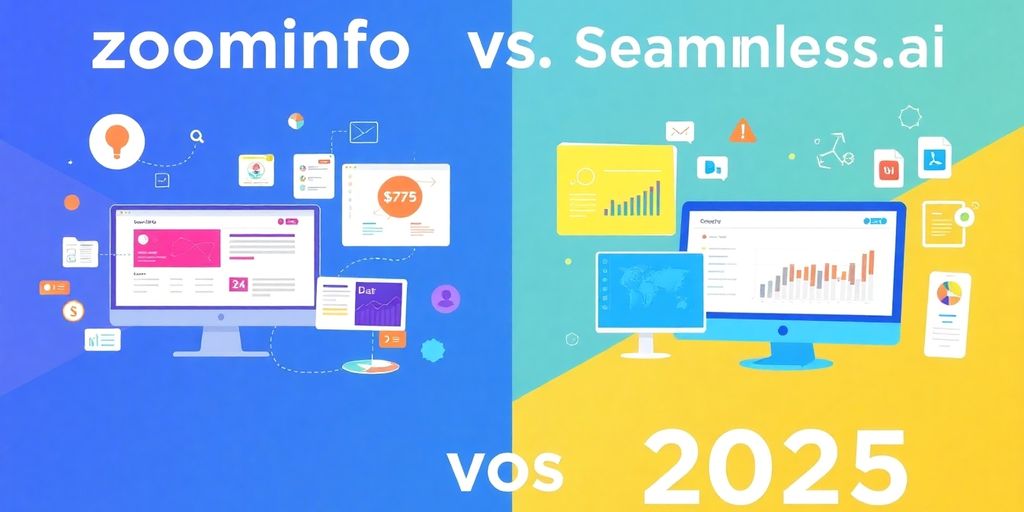Last updated on May 26th, 2025 at 07:10 am
In 2025, customer service is undergoing a major transformation thanks to artificial intelligence (AI). Companies are embracing AI technologies to create more efficient and personalized experiences for their customers. This article dives into how AI agents are reshaping customer service, showcasing useful case studies and innovative applications that demonstrate the impact of this technology.

Key Takeaways
- AI is making customer service more data-driven and personalized, enhancing overall customer satisfaction.
- Voice and emotion recognition technologies are helping businesses understand customer feelings, leading to more empathetic interactions.
- Predictive analytics allows companies to anticipate customer needs, enabling proactive support and improving retention rates.
- Innovative AI applications like virtual agents and automated self-service solutions are streamlining customer interactions and reducing wait times.
- Successful case studies, such as those from H&M and Bank of America, illustrate the tangible benefits and ROI of implementing AI agents in customer service.
How AI Is Changing Customer Service In 2025
It’s 2025, and if you haven’t noticed, AI is everywhere in customer service. What used to be a futuristic concept is now the norm. Companies are using AI in ways we only dreamed about a few years ago. It’s not just about chatbots anymore; it’s a complete overhaul of how businesses interact with their customers. Let’s take a look at how AI is changing the game.
The Shift Towards Data-Driven Support
AI is making customer support smarter by using data to drive decisions. Instead of relying on gut feelings, companies can now analyze vast amounts of information to understand what customers want and need. This means better, faster, and more effective support. For example, AI agents can analyze past interactions to predict future issues, allowing support teams to proactively address problems before they even arise.
Enhancing Personalization Through AI
Remember when customer service felt generic and impersonal? Those days are fading fast. AI is enabling businesses to personalize every interaction, making customers feel valued and understood. This isn’t just about using a customer’s name; it’s about tailoring the entire experience to their individual preferences and needs. Think of it like having a personal assistant who knows exactly what you want before you even ask.
Anticipating Customer Needs with Predictive Analytics
Predictive analytics is a game-changer. By analyzing past behavior and trends, AI can anticipate what customers will need in the future. This allows businesses to offer proactive support, personalized recommendations, and even prevent problems before they happen. It’s like having a crystal ball that shows you exactly what your customers are going to want next. Here’s a quick look at the impact:
- Proactive Support: Addressing issues before customers even notice them.
- Personalized Offers: Recommending products or services based on individual preferences.
- Churn Prevention: Identifying at-risk customers and taking steps to retain them.
AI is not just about automating tasks; it’s about creating a better, more personalized experience for every customer. By understanding their needs and anticipating their desires, businesses can build stronger relationships and foster long-term loyalty.
Voice and Emotion Recognition In Customer Interactions

Understanding Customer Emotions
AI is getting really good at figuring out how customers feel, not just what they’re saying. By 2025, voice analysis will be a game-changer. It’s not just about picking up keywords; it’s about understanding the tone, pitch, and speed of someone’s voice. This helps in spotting frustration, happiness, or confusion. Imagine a system that knows when a customer is getting annoyed and can automatically escalate the call to a human agent. That’s where we’re headed. voice analysis can really help.
Building Empathy Through AI
AI can help build empathy by tailoring responses to a customer’s emotional state. It’s not about robots pretending to be human; it’s about using data to understand needs better. If a customer sounds stressed, the AI can offer a more patient and understanding response. This creates a better experience and builds trust. Think of it as AI helping human agents to be even better at their jobs.
The Future of Conversational AI
Conversational AI is evolving fast. It’s moving beyond simple Q&A to having real conversations. This means AI can handle more complex issues and provide more personalized support. Here are some things to expect:
- More natural-sounding interactions
- Better understanding of context
- Ability to handle multiple topics in one conversation
The goal is to make AI interactions feel less like talking to a machine and more like talking to a helpful person. This will improve customer satisfaction and make support interactions more efficient. It’s about making technology work for us, not the other way around.
The Role of Predictive Analytics In Customer Support
Predictive analytics is becoming a big deal in customer support. It’s all about using data to guess what customers might need before they even ask. This means companies can fix problems early and make customers happier. It’s not perfect, but it’s getting better all the time.
Proactive Problem Solving
Imagine knowing a customer is about to have trouble before they do. That’s the power of proactive problem-solving. AI can look at past interactions and spot patterns that suggest someone might need help soon. For example, if a customer always calls about the same issue after a software update, the company can reach out first with a solution. This reduces frustration and makes the customer feel valued.
Churn Prevention Strategies
Losing customers is bad for business. Predictive analytics can help stop this by identifying people who are likely to leave. Maybe they haven’t been using the service much, or they’ve complained a lot recently. By spotting these signs, companies can reach out with special offers or extra support to keep them around. It’s like giving them a reason to stay before they decide to go.
Tailored Recommendations for Customers
AI can also suggest products or services that a customer might like, based on what they’ve bought before or what they’ve been looking at. This isn’t just about selling more stuff; it’s about making the customer’s experience better. If they see something that’s actually useful to them, they’re more likely to be happy with the company. It’s like having a personal shopper who knows what you want before you do.
Predictive analytics is not a crystal ball, but it’s pretty close. It helps businesses anticipate customer needs, solve problems before they happen, and offer personalized recommendations. This leads to happier customers, fewer lost sales, and a better overall experience.
Here’s a simple example of how predictive analytics might work in practice:
- Track customer website activity.
- Analyze past purchase history.
- Identify customers at risk of churn.
- Offer personalized discounts or support.
Innovative AI Applications Transforming Customer Service
AI is really changing the game in customer service. It’s not just about chatbots anymore; it’s about completely rethinking how businesses interact with their customers. Let’s look at some of the cool ways AI is being used right now.
Conversational Virtual Agents
AI chatbots are way more advanced than the old IVR systems. These virtual agents use natural language processing (NLP) to actually understand what customers are saying. They can handle simple stuff like tracking orders or resetting passwords, which frees up human agents to deal with more complicated problems. It’s like having a super-smart assistant that’s available 24/7. virtual agents are redefining self-service.
AI-Powered Self-Service Solutions
AI is making self-service way better. Instead of just reading FAQs, customers can use AI tools to solve problems on their own. This means fewer calls to customer support and happier customers who can get things done quickly. AI ensures instant, reliable solutions.
Dynamic Call Routing and Support
AI can analyze incoming calls and route them to the right agent based on the customer’s needs and the agent’s skills. This means faster resolution times and a better experience for everyone involved. It’s all about getting the customer to the right person as quickly as possible.
AI is not just automating tasks; it’s creating a more personalized and efficient customer service experience. By understanding customer needs and preferences, AI can help businesses deliver better support and build stronger relationships.
Case Studies of Successful AI Agent Implementations
It’s one thing to talk about the potential of AI agents, but it’s another to see them in action. Let’s look at some real-world examples of companies that have successfully implemented AI agents to improve their customer service and overall business operations.
H&M’s Shopping Assistant
H&M was facing challenges with rising cart abandonment rates and overwhelmed customer service teams. To combat this, they introduced an AI-powered shopping assistant on their website and app. This assistant helps customers find products, provides style advice, and answers frequently asked questions. The results? A noticeable increase in e-commerce conversions and a reduction in the burden on their human customer service representatives. This shows how AI agent development service can lead to real improvements.
Bank of America’s Erica
Bank of America launched Erica, a virtual financial assistant, to help customers manage their accounts, pay bills, and get financial advice. Erica uses natural language processing to understand customer requests and provide personalized responses.
Here’s what makes Erica stand out:
- Proactive alerts: Erica sends notifications about potential overdrafts or unusual spending activity.
- Personalized insights: It offers tailored financial advice based on a customer’s spending habits and financial goals.
- Seamless integration: Erica is available through the Bank of America mobile app, making it easy for customers to access assistance anytime, anywhere.
Erica has become a key component of Bank of America’s customer service strategy, demonstrating the power of AI in the financial industry. It’s a great example of how AI agents can be used to improve customer engagement and provide personalized financial guidance.
Lufthansa’s AI Support Agents
Lufthansa uses AI support agents to handle a high volume of customer inquiries across various channels, including phone, email, and chat. These agents can answer questions about flight schedules, baggage allowances, and booking changes. By automating these routine tasks, Lufthansa has freed up its human agents to focus on more complex issues, resulting in faster response times and improved customer satisfaction. The airline industry is seeing a lot of customer service AI implementations like this.
Evaluating the ROI of AI Agents
It’s 2025, and AI agents are no longer a futuristic concept; they’re a present-day reality. But how do we know if they’re actually worth the investment? Evaluating the return on investment (ROI) of AI agents is essential for understanding their true impact on your business. It’s not just about cutting costs; it’s about seeing real, measurable improvements across the board. The AI agent market is booming, and for good reason.
Measuring Impact on Customer Satisfaction
Customer satisfaction is a key indicator of success. Are your customers happier with the service they’re receiving? Are they more likely to recommend your business to others? AI agents can play a big role in improving customer satisfaction by providing faster, more personalized support. Tracking metrics like Net Promoter Score (NPS), Customer Satisfaction (CSAT), and Customer Effort Score (CES) can help you gauge the impact of AI agents on customer sentiment. A simple way to think about it is: are customers less frustrated now that they’re interacting with AI?
Cost Savings Through Automation
One of the most obvious benefits of AI agents is their ability to automate tasks, which can lead to significant cost savings. By automating routine inquiries and tasks, AI agents free up human agents to focus on more complex issues. This not only reduces labor costs but also improves efficiency. Consider these points:
- Reduced staffing needs
- Lower training costs
- Increased agent productivity
It’s important to remember that cost savings aren’t the only factor to consider. While automation can certainly reduce expenses, it’s crucial to ensure that it doesn’t come at the expense of customer experience. The goal is to find a balance between efficiency and quality.
Long-Term Benefits of AI Integration
The benefits of AI integration extend far beyond immediate cost savings and customer satisfaction improvements. AI agents can also help you gather valuable data about your customers, which can be used to improve your products, services, and marketing efforts. Furthermore, AI agents can help you personalize the customer experience, which can lead to increased loyalty and revenue. Think about the long game. How can AI agent development help you innovate and stay ahead of the competition? Here are some long-term benefits to consider:
- Improved data analysis and insights
- Enhanced personalization capabilities
- Increased customer loyalty
Challenges and Considerations in AI Adoption

Overcoming Resistance to Change
Getting everyone on board with AI isn’t always easy. People can be hesitant to trust new technology, especially when it changes how they do their jobs. Resistance can come from different places – employees worried about job security, managers unsure how to integrate AI, or even customers who prefer human interaction. To deal with this, it’s important to:
- Clearly communicate the benefits of AI, showing how it can make work easier and improve customer experiences.
- Provide training and support to help employees adapt to new AI-powered tools.
- Involve employees in the implementation process to get their feedback and address their concerns.
Change management is key. It’s not just about installing new software; it’s about helping people understand and embrace the new way of doing things.
Ensuring Data Privacy and Security
AI systems need data to work, and a lot of that data can be sensitive customer information. This raises big concerns about privacy and security. Companies need to make sure they’re protecting customer data from breaches and using it responsibly. Here’s what that looks like:
- Implementing strong security measures, like encryption and access controls.
- Complying with data privacy regulations, such as GDPR and CCPA.
- Being transparent with customers about how their data is being used. For example, you can integrate AI into BI systems with privacy as a foundational principle.
Balancing AI and Human Interaction
While AI can automate many tasks, it’s important to remember that customer service is still about building relationships. You don’t want to create a situation where customers feel like they’re only interacting with machines. Finding the right balance between AI and human interaction is key. Consider these points:
- Using AI to handle routine tasks and free up human agents to focus on more complex issues.
- Making sure customers always have the option to speak to a human agent if they prefer.
- Training AI systems to understand and respond to customer emotions, so they can provide more empathetic support.
Here’s a simple table illustrating the balance:
| Task | AI Role | Human Role |
|---|---|---|
| Answering FAQs | Automated chatbot responses | Handling complex or unique inquiries |
| Processing basic requests | AI-powered self-service portals | Providing personalized support and empathy |
| Data entry | Automated data capture and processing | Overseeing data quality and accuracy |
Wrapping Up: The Future of Customer Service with AI
As we look ahead to 2025, it’s clear that AI is reshaping customer service in ways we never thought possible. Companies are not just using AI to answer questions anymore; they’re using it to predict what customers need before they even ask. This shift is making interactions smoother and more personal. Sure, there are still challenges to tackle, like making sure AI understands emotions and nuances. But the potential is huge. Businesses that embrace these changes will likely see happier customers and better results. So, whether you’re a business owner or just curious about tech, keeping an eye on AI in customer service is definitely worth it.
Frequently Asked Questions
How is AI changing customer service today?
AI is making customer service smarter and more personal. It helps businesses understand what customers want and respond quickly to their needs.
What is voice and emotion recognition in customer service?
Voice and emotion recognition technology allows AI to understand not just what customers say, but also how they feel, making interactions more friendly and supportive.
How does predictive analytics help in customer support?
Predictive analytics uses past data to guess what a customer might need next, helping businesses solve problems before they happen.
What are conversational virtual agents?
Conversational virtual agents are AI tools that can chat with customers, answer questions, and help with tasks like booking or refunds.
Can AI completely replace human customer service agents?
No, AI can’t replace humans for every task. While it can handle simple questions, humans are still needed for more complicated issues that require empathy.
What challenges do businesses face when using AI in customer service?
Businesses may struggle with getting people to accept AI, keeping customer data safe, and finding the right balance between AI and human help.







